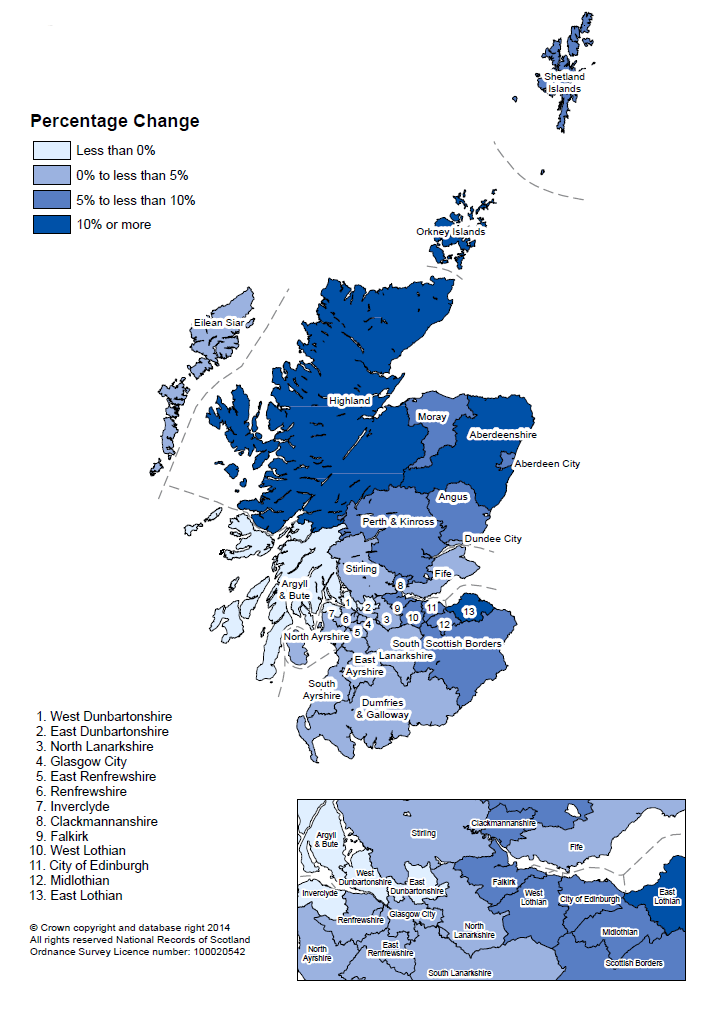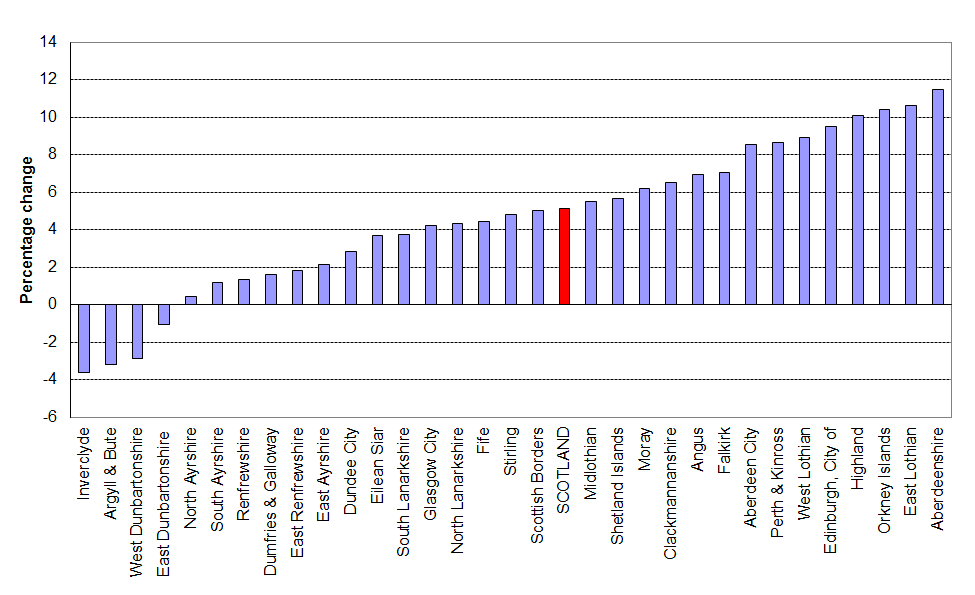5.1 Since mid-2003 Scotland's population has increased by 5.1 per cent. In most Council areas the population has increased as shown by the map of Figure 13a and in Figure 13b. The largest percentage increases have occurred in Aberdeenshire (+11.5 per cent), East Lothian (+10.6 per cent) and Orkney Islands (+10.4 per cent). However, in some Council areas, such as Inverclyde (-3.6 per cent), Argyll & Bute (-3.2 per cent), West Dunbartonshire (-2.9 per cent) and East Dunbartonshire (-1.1 per cent), the population has decreased. The population has increased in all NHS Board areas as shown by Figure 14.
5.2 The relative importance of migration and natural change differs between Council areas. For ease of presentation other changes have been included with migration for the analysis in this section. In some areas where the population has increased since mid-2003, such as North Lanarkshire, West Lothian and Shetland Islands, the gain is attributable both to migration and natural increase (more births than deaths). East Lothian, South Lanarkshire and Stirling have experienced a population increase because of in-migration combined with a relatively low (positive) natural change. In other areas, the population increase is due to in-migration, despite the number of deaths exceeding the number of births. These areas included Dundee City, Moray and Scottish Borders.
5.3 Similarly, East Dunbartonshire, Inverclyde and West Dunbartonshire have experienced population decreases both from migration and natural change, whereas in Argyll & Bute the population decline is mainly attributable to more deaths than births. This analysis is shown in Table 10, which compares the percentage change in population due to natural change, migration and other changes across the Council areas.


